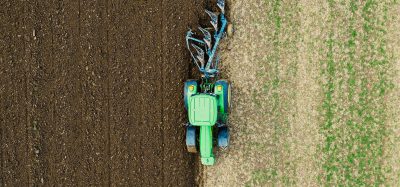Farmers see more success in creative communities research suggests
- Like
- Digg
- Del
- Tumblr
- VKontakte
- Buffer
- Love This
- Odnoklassniki
- Meneame
- Blogger
- Amazon
- Yahoo Mail
- Gmail
- AOL
- Newsvine
- HackerNews
- Evernote
- MySpace
- Mail.ru
- Viadeo
- Line
- Comments
- Yummly
- SMS
- Viber
- Telegram
- Subscribe
- Skype
- Facebook Messenger
- Kakao
- LiveJournal
- Yammer
- Edgar
- Fintel
- Mix
- Instapaper
- Copy Link
Posted: 14 July 2021 | Arianna Dinelli | No comments yet
Associate professor Todd Schmit and his research team claim to have found data that suggests communities that possess more non-profits, social enterprises and creative industries help farmers prosper.


The data collected by the researchers suggests communities with more creative industries can be more profitable for farmers
Direct farm marketing efforts such as farmers markets and roadside stands are more successful in communities with more nonprofits, social enterprises and creative industries. That’s according to a team of Cornell University researchers, who created a nationwide database of assets to help municipalities craft community-specific development plans.
While many municipalities seek to encourage direct-to-consumer (DTC) marketing – an important factor in farmers’ livelihoods – the success of their efforts hinges on a wide array of community resources, or capital assets, with natural and cultural assets correlating most strongly with farmers’ success, the research found.
To explore differences between communities, Todd Schmit, associate professor in the Charles H. Dyson School of Applied Economics and Management, and colleagues at Colorado State University and the University of Missouri, created a database of assets for every US county, focusing on six areas: built, cultural, financial, human, natural and social.
“There’s a broad acceptance of the idea that sustainable community development is dependent on this array of capital assets. But when it comes to measuring those capitals, the literature is all over the place,” Schmit said.
“Some studies will use educational attainment to measure human capital, but others will use food security, or access to medical care. We thought, why not measure all of those things?”
To create their database, Schmit and his colleagues gathered data from sources such as the US Census and the US Department of Agriculture (USDA), on various factors being: the number of manufacturing establishments; the number of owner-occupied housing units without a mortgage; and acreage of farmland.
Then, they used their new database to evaluate DTC farm marketing against community capital stocks in an article published 2 July , in the journal Food Policy: “Measuring Stocks of Community Wealth and Their Association with Food Systems Efforts in Rural and Urban Places.”
The research found that high levels of natural capital, especially farmland, correlated positively with DTC farm marketing. Additionally, a positive association with cultural capital was found. Essentially, communities with more nonprofits, social enterprises and creative industries help farmers prosper in direct marketing.
“Art-centric businesses, museums, theatres, symphonies, architecture firms – there was a very complementary effect,” Schmit claimed. “Maybe farmers markets are hosting musicians or art vendors and that’s making the farmers market a bigger draw for consumers? Or maybe because people are coming to communities to visit an art gallery or go to a museum, they’re saying, ‘Well, let’s head over to the farmers market, too, and make a day of it.'”
Schmit expressed his hopes for the new database to be helpful for community planners, and researchers studying issues surrounding regional development.
“With this paper, we wanted to showcase an application of these capital stocks, but our bigger purpose is to provide this data for others to use in whatever application they want: obesity, child nutrition programs, infrastructure investment planning, conservation protection,” he said. “We want people to use this data.”
Co-author Becca Jablonski, a Cornell alum and an associate professor of agricultural and resource economics at Colorado State University, expressed her hopes for the database to enable researchers to craft economic development policies that are more successful, and community-specific.
“Often policymakers set strategies to support community economic development at the federal level without full consideration of the fact that different types of programs and initiatives will have different impacts in different places based on the comparative advantage of a particular place – what they do better than other places,” Jablonski said.
“We hope that this database of the stocks of community assets can help decision-makers more thoughtfully reflect on their unique strengths and opportunities.”
Related topics
Related organisations
Charles H Dyson School of Applied Economics and Management, Colorado State University, Cornell University, U.S. Census, U.S. Department of Agriculture







